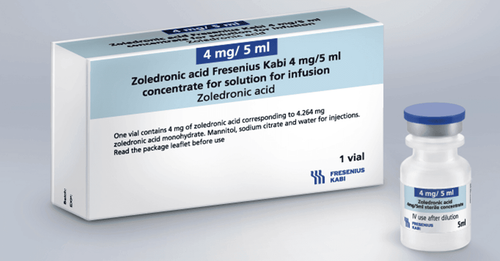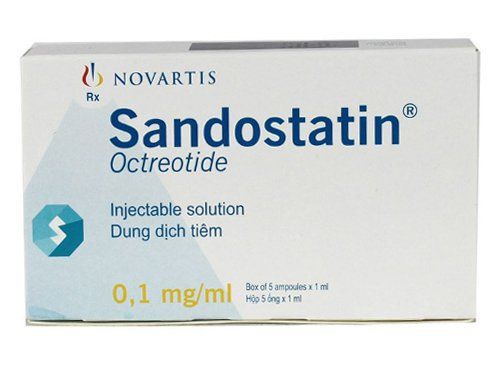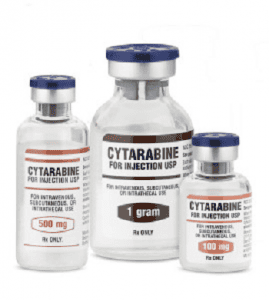This is an automatically translated article.
Cotellic is a cancer treatment drug indicated in malignant cancers that have metastasized or have no indication for surgery. So what is the use of Cotellic? How to use for best results?1. What is Cotellic?
Cotellic has the main ingredient Cobimetinib, a selective, reversible inhibitor that blocks the orally administered mitogen-activated protein kinase (MAPK) pathway. Cobimetinib acts by targeting the extracellular signal-regulating kinases activated by the mitogens MEK-1 and MEK-2, resulting in inhibition of the extracellular phosphorylation of the ERK-1 and ERK-signal-regulating kinases. 2. Thereby, blocking cell proliferation induced by the MAPK pathway through inhibition of the MEK1/2 signaling node.Clinically, the use of Cotellic, often combined with Vemurafenib, increases the potential for stronger inhibition of intracellular signaling and reduces tumor proliferation. Cotellic is rapidly absorbed from the gastrointestinal tract, bound to plasma proteins about 95%. The drug is metabolized by the liver and eliminated in the faeces. Cotellic is a cancer drug that interferes with the growth and spread of cancer cells in the body.
2. Indications of the drug Cotellic
Cotellic is indicated for the treatment of patients with melanoma with a BRAF V600 mutation that has metastasized or cannot be operated on. Cotellic treatment in combination with Vemurafenib or a placebo of similar composition.
3. Contraindications of Cotellic
Patients who are allergic to Cobimetinib or any of its ingredients should not use Cotellic.
4. Notes when using Cotellic
Patients must have laboratory evidence that a tumor is positive for the BRAF V600 mutation before taking Cotellic in combination with Vemurafenib. Cobimetinib in combination with Cotellic in patients progressing to a BRAF inhibitor is likely to be less effective, so other treatment options should be considered. Cases of BRAF V600 mutation-positive melanoma that have spread to the brain have not been tested for safety and efficacy. Patients at risk for bleeding, brain metastases, and patients taking antiplatelet or anticoagulant drugs should use caution when taking Cotellic because of the increased risk of bleeding. Monitor for ocular manifestations during administration for the potential for serous retinopathy (fluid accumulation in the layers of the retina), new or worsening visual disturbances. Assess left ventricular function, liver function, liver enzymes before and during Cotellic treatment (at least every 3 months). Cotellic can cause rhabdomyolysis and elevation of muscle enzymes (CK), so the patient should be monitored throughout the course of the drug, possibly reducing the dose or stopping treatment. The drug can cross the placenta and breast milk, so pregnant and lactating women should use caution.
5. Cotellic drug interactions
Cotellic is metabolised in the liver by CYP3A and AUC, so use in combination with strong CYP3A inhibitors (Itraconazole, Ritonavir, Cobicistat, Telaprevir, Lopinavir, Voriconazole, Clarithromycin, Telithromycin, Posaconazole, Nefazodone and grapefruit juice) will increase the metabolism of the drug. The Cobimetinib component of Cotellic is a substrate of P-glycoprotein (P-gp). Concomitant administration of P-gp inhibitors such as ciclosporin and verapamil may increase plasma concentrations of the drug. Cotellic in combination with Vemurafenib has been shown to be of clinical benefit in patients with BRAF V600-mutant melanoma and no drug interactions have been observed. Vitamins or certain herbal products may alter the bioavailability of Cotellic when taken in combination. Therefore, it is important to inform your doctor of all medications you are taking when starting treatment.
6. Dosage and how to use Cotellic
How to use:
Cotellic is prepared in the form of tablets, taken whole with filtered water. Before initiating Cotellic therapy, patients must be tested for a BRAF V600 mutation-carrying melanoma. Dosage:
Usual dose: 60mg/time/day. Each treatment cycle with Cotellic lasted 28 days, in which the patient took it for 21 consecutive days, took a break of 7 days and started the treatment cycle in the next month. Patients who vomit after taking the drug should not take another dose that day and should continue the dose treatment the next day. Duration of drug therapy until the drug fails to respond to disease progression or unacceptable side effects. Any dose adjustment in different patient populations must be prescribed by a specialist.
7. Cotellic side effects
Some unwanted effects may occur when taking Cotellic:
Basal cell carcinoma. Drug-induced squamous cell carcinoma of the skin. U are hyperplastic horns. Signs of dehydration, hypophosphataemia, hyponatremia, hyperglycemia. Severe retinopathy, blurred vision, visual impairment. Hypertension, bleeding. Alveolar inflammation. Diarrhea, nausea, vomiting. Photosensitivity, rash, keratinization of the skin. Increased muscle enzymes (CPK), increased liver enzymes (ALT, AST, GGT), increased blood ALP, increased bilirubin, decreased ejection fraction. Fever, chills. Rhabdomyolysis (rare). Thus, Cotellic is an anti-cancer drug used in combination with Vemurafenib to treat malignant tumors carrying mutations in the BRAF V600 gene that have metastasized or cannot be operated on. Medicines must be used exactly as prescribed and under mandatory monitoring by a specialist.













